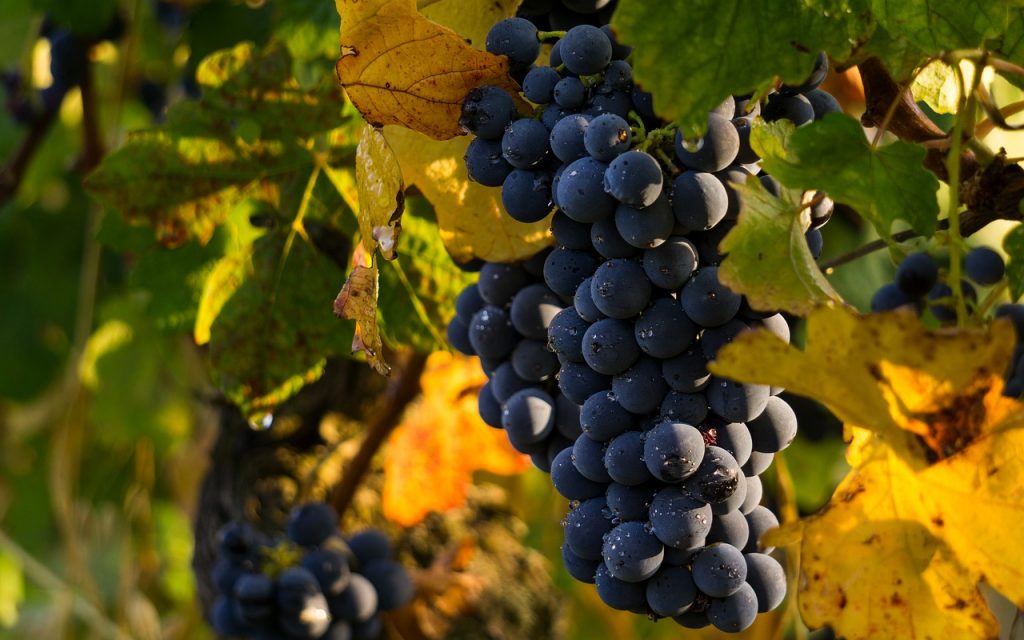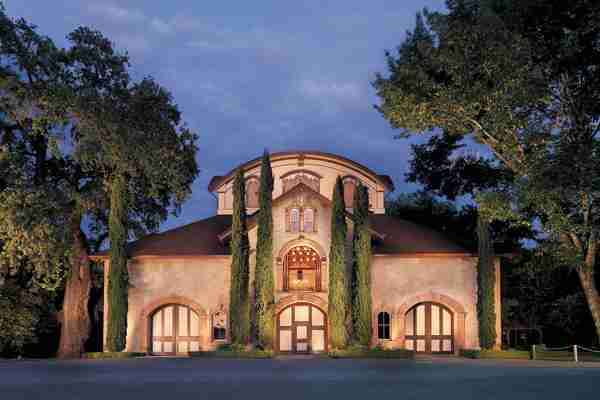Top 3 Wine Regions In Mendoza: 1st Timer’s Guide
The Mendoza wine region is Argentina’s most celebrated wine destination, known for its breathtaking landscapes, high-altitude vineyards, and world-class wines.
It’s no wonder why Mendoza was listed by National Geographic as one of the top 10 historic destinations in the world – largely because of the rich history of winemaking and the unique history of the city -and region- itself.
Whether you’re a seasoned sommelier or simply someone who enjoys a great glass of wine, Mendoza offers a rich and diverse experience with each of its unique sub-regions.
From historic Maipú to the picturesque Uco Valley, every corner of Mendoza has something special to offer.
Explore beyond Mendoza! Don’t miss our guides to other iconic wine regions like Tuscany, Bordeaux, and Napa Valley, where even more unforgettable wine adventures await!
This article was contributed by TeaCoffee99.com.
Mendoza: a brief history
The city was founded in the 16th century by Spanish colonizers. Right from the start, Mendoza stood out: native tribes of the area had devised a complex irrigation system that utilized water from nearby rivers to water the area.
As a result, Mendoza is an astonishingly green city. Trees tall as towers line almost every single street in Mendoza, making a simple walk around the city a magical experience. These trees are watered using this 500 year-old irrigation system.
the Beginning Of winemaking
It wasn’t up until the 19th century that wine started being appreciated more in the country. Argentina saw massive immigration, especially from Italy, a country with one of the oldest wine traditions in the world. These Italian immigrants wanted better wine, and they looked to Mendoza.
Why Mendoza? Because it is huge. It is a vast expanse of practically desert in which, under normal circumstances, no one would think to grow grapes in. That’s when that centuries-old, pre-colonization irrigation system came in. It was improved upon, expanded, giving the region enough water to produce enough high quality wine for the whole country – and then some.
The making of Mendoza
 What happened next was an explosion. Some of these immigrants were wine experts, and they brought their culture to Mendoza. The government saw the immense potential here, so they declared it illegal to grow wine anywhere but Mendoza.
What happened next was an explosion. Some of these immigrants were wine experts, and they brought their culture to Mendoza. The government saw the immense potential here, so they declared it illegal to grow wine anywhere but Mendoza.
This would ensure that all winemakers would gather here, making it the wine capital. If you wanted to make wine, you’d have to go to Mendoza. It created a winemaking community in Mendoza that supported each other and that shared knowledge with each other.
At the time, Argentina loved everything French – even in architecture, their buildings were being built à la French, and wine was no different. By the start of the 20th century, over 80% of vineyards in Mendoza were from French stock. The most important one would be Malbec, Argentina’s favorite and their most important product in terms of wine.
So we have a thriving community that has imported not only experts from the Old Worlds, but also its best seeds.
The second main ingredient here is the location. As we mentioned, Mendoza is located in an arid region which is irrigated. This water comes from nearby rivers – Mendoza is actually quite close to The Andes, South America’s vast mountain range which goes through the whole continent from top to bottom.
Up in the peaks of these mountains glaciers form, which melt and create these rivers. This water is exceptionally rich in nutrients, which plays a big part in the unique flavorfulness of Argentine wine.
1. Central Regions
The central regions of Mendoza, including Maipú and Luján de Cuyo, form the historical and cultural core of Argentine wine production. These areas are where Mendoza’s wine journey began, blending rich tradition with renowned modern wineries.
Whether you want to explore the roots of early viticulture or taste award-winning Malbecs, the central regions offer a truly immersive experience.
Maipú
- Known for: Oldest winemaking region, historic viticulture; Great for history buffs, wine origin enthusiasts
- Must-Try: Finca Mirador by Achaval Ferrer
Maipú (an aboriginal name) has the oldest winemaking tradition of them all, being the very first region which was populated.
Maipú gets very little rainfall year round, meaning that it is almost entirely dependent on the Mendoza River for irrigation. The more glaciers are melting over at the Andes, the better it is for viticulture in this region.
It’s also worth noting that while Maipú may be the oldest region in terms of winemaking, it is not by far the best one, precisely because of the lack of rainfall. But it was thanks to Maipú and to its early success that winemaking was brought to Mendoza.
Luján de Cuyo
- Known for: High-altitude vineyards, premium Malbec; Perfect for Malbec lovers, wine-tasting enthusiasts
- Must-Try: Gernot Langes
Luján de Cuyo was the first delineated appellation for the purposes of wine production – recognized by the IOVW – the International Organization of Vine and Wine. It’s located in the Upper Mendoza Valley, at a higher altitude than Maipú, making it a better location for certain varieties, Malbec in particular being the main variety produced here.
Luján de Cuyo is located in a valley south of Mendoza City and it is one of the most important viticulture spots in the country, with most of the big winemaking names in the country hailing from this region.
It shares its name with a small town which is usually one of the first stops of tourists visiting the area.
Merlot, Cabernet Sauvignon and Pinot Noir are the main varieties here, with Gernot Langes being one of the most delicious producers in the region.
2. Northern Regions
The northern regions are Lavalle, Guaymallén, and Las Heras. They are located next to the Mendoza River in a relatively green area of Mendoza compared to the other regions. It is approximately 700 meters above sea level, making the climate rather warm.
Lavalle
- Known for: Artisanal, homemade wines; Ideal for those seeking authentic, small-batch wine experiences
- Must-Try: Local family-produced wines
Perhaps one of the most interesting things about Lavalle is the amount of independent winemakers in the region: it is often referred to as the South American capital of artisanal, homemade wine.
Because of the favorable weather here, vineyards have to be tended to very little, making viticulture largely hassle-free, and incentivizing people to make their own wine.
Lavalle’s homemade wine is a unique delicacy and a must-try if you’re ever in the country.
Guaymallén
- Known for: Sparkling wines, vibrant cultural scene; Great for sparkling wine fans, culture seekers
- Must-Try: Efigenia Extra Brut
A region full of old colonial Spanish buildings, it has found its niche in sparkling wine. Guaymallén (an aboriginal name, too) has broken with tradition and strayed from the path of Malbec to favor sparkling wines.
Nationally, Guaymallén is also known as a cultural hub, full of museums and tourist spots.
Las Heras
- Known for: Argentina’s oldest official winery, traditional winemaking methods; Perfect for heritage wine lovers, classic Malbec fans
- Must-Try: Traditional Malbecs from González Videla de Las Heras
Here we find the oldest official winey in the country: González Videla de Las Heras.
Las Heras is a region that is dominated by tradition: most winemakers in this region do things exactly the same way their fathers and grandfathers did them. Malbec is their main product.
Las Heras is home to several modern wine bars which will offer you a selection of the best wines of the region – and that’s a fact!
3. Southern Regions
San Rafael
- Known for: Chenin Blanc, diverse varietals; Great for white wine lovers, those seeking unique varietals
- Must-Try: Locally produced Chenin Blanc
San Rafael and General Alvear are the two departments at the southern region of Mendoza, both at comparatively low altitudes ranging from 400 to 700 meters above sea level. They are known mostly for their Chenin and in general for straying from Malbec tradition. But most importantly, the southern region is home to the Uco Valley.
General Alvear
- Known for: Non-traditional varietals, innovative winemaking; Ideal for adventurous wine enthusiasts
- Must-Try: Unique blends from boutique wineries
Uco Valley
- Known for: High-altitude vineyards, premium wines, breathtaking landscapes; Great for wine aficionados, nature lovers
- Must-Try: Gravascal by Finca Piedra Infinita (Zuccardi Family)
One of Mendoza’s most picturesque locations sitting at up to 1600 meters above sea level. This makes the Uco Valley more temperate when it comes to climate, and the Uco Valley doesn’t feel the change of the seasons as much.
A stable and milder climate makes for better wine, and Uco Valley is one of the top locations for Argentines who love wine: the region is breathtakingly beautiful and that alone is enough to attract visitors.
Uco Valley also has a lot of small, independent winemakers. Many of these try out new wines in local restaurants and bars, making it a big attraction to go out to the Uco Valley to taste many different wines. You might just taste one of Uco Valley’s next big hits!
Explore The Flavors Of Mendoza
Mendoza’s diverse wine regions offer something for every kind of wine lover—whether you’re into exploring the deep roots of historic winemaking in Maipú, the high-altitude Malbecs of Luján de Cuyo, or the artisanal, handcrafted wines of Lavalle.
From rich reds to crisp whites and even sparkling varieties, Mendoza’s vineyards invite you to explore the full spectrum of Argentine viticulture.
Get inspired and continue your wine-tasting journey around the world. Don’t miss out on our guides to other renowned wine regions like Tuscany, Bordeaux, and Napa Valley. Each region has its own story, flavors, and experiences waiting for you! Start planning your next wine adventure today.









